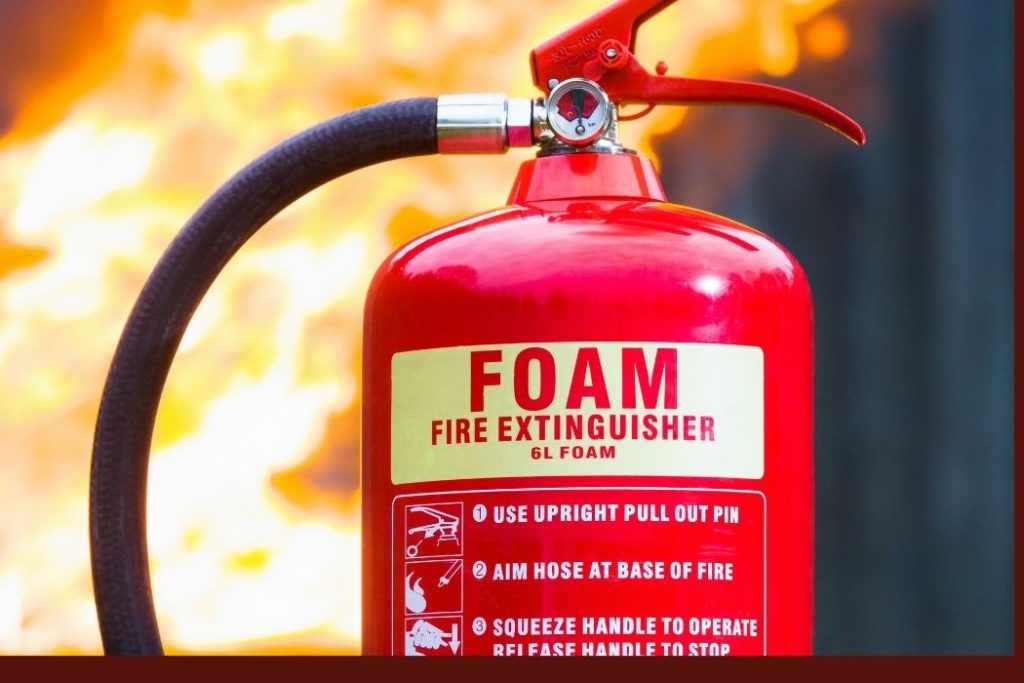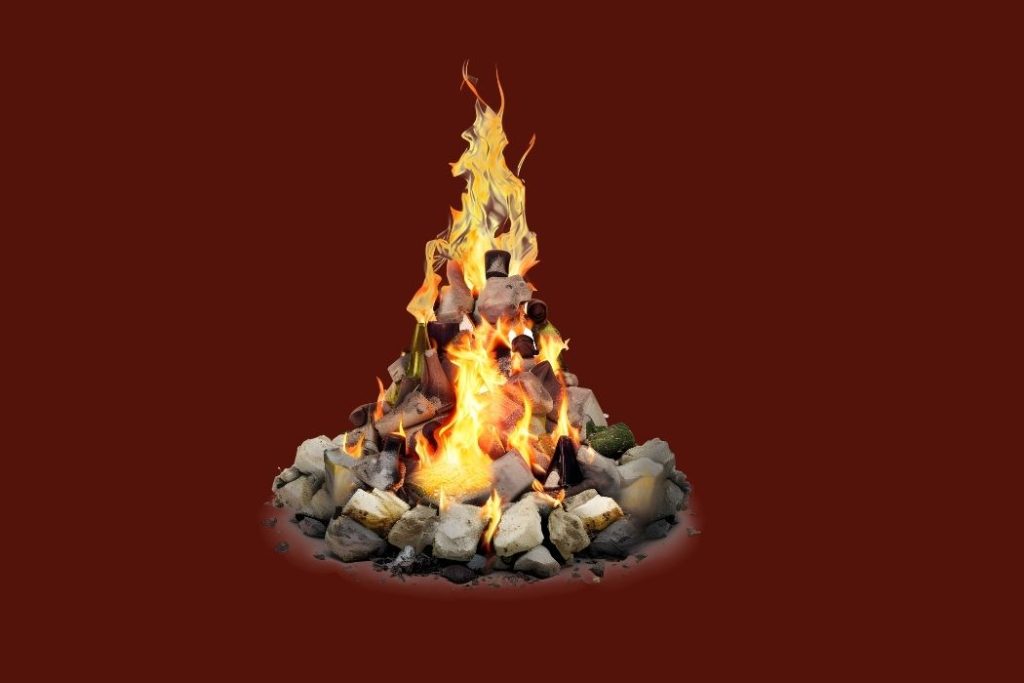Table of Contents
- Why this matters in 2025
- The quick answer
- Core definitions (with examples)
- Prevention vs Protection vs Suppression: Side‑by‑side
- UK compliance lens (2025 updates)
- Fire suppression systems: types, use‑cases & caveats
- What should you prioritise? A layered plan
- Data that moves the needle
- Action checklist (save or print)
- FAQs
- About the author & disclosures
Why this matters in 2025
Whether you manage a residential block, a warehouse, a data hall, or a commercial kitchen, you’ll encounter three terms that sound similar but drive different decisions and budgets: fire prevention, fire protection, and fire suppression. With standards updated this year (notably for alarms and water mist) and new environmental restrictions affecting foams, clarity isn’t a “nice to have” — it’s compliance‑critical. BS and government guidance now makes it easier to choose the right mix, provided you understand the roles each layer plays.
The quick answer
- Fire prevention stops fires from starting (good housekeeping, training, safe systems of work, DSEAR controls).
- Fire protection reduces harm when a fire occurs. It includes passive measures (fire doors, compartmentation) and active measures (detection, alarms).
- Fire suppression is an active measure that controls or extinguishes a fire (sprinklers, water mist, clean agent, foam, wet chemical).
You need all three, but prevention is your first line, protection buys time and enables safe evacuation, and suppression tackles the fire itself.

Core definitions (with examples)
Fire prevention
Policies, procedures and maintenance that remove ignition sources or reduce fuel so a fire is unlikely to start:
- Hot‑work permits and monitoring
- Housekeeping (clear escape routes, control of combustibles)
- Electrical safety and planned maintenance
- DSEAR controls for flammables (storage, ventilation, ATEX zoning)
UK legal anchor: The Regulatory Reform (Fire Safety) Order 2005 requires a suitable and sufficient fire risk assessment and proportionate measures; responsibilities are further clarified for responsible persons (RPs) by Home Office guidance.
Fire protection
Measures that limit the spread and warn people early:
- Passive: fire‑resisting walls, ceilings and certified fire doors; firestopping
- Active (detection/alarms): smoke/heat detection, sounders, voice alarms designed to BS 5839 series (with BS 5839‑1:2025 update now in force; e.g., clarified rules around voids and device siting).
Why alarms matter: In England, 92% of households reported having a working smoke alarm in YE March 2024 — an important prevention/protection success — yet smoke alarms did not operate or did not raise the alarm in around 29% of dwelling fires, often due to positioning or maintenance issues.
Fire suppression
Systems designed to control or extinguish a fire — automatically or manually:
- Water‑based: sprinklers (BS EN 12845 / LPC Rules), water mist (now aligned to EN 14972 for residential; BS 8489 for many industrial applications)
- Gas/clean agents: BS EN 15004 / NFPA 2001
- Foam: EN 13565 series
- Wet chemical (Class F in kitchens), CO₂ (for normally unoccupied hazards)
Prevention vs Protection vs Suppression: Side‑by‑side
Plain‑English rule of thumb: Prevention reduces likelihood. Protection reduces impact on people. Suppression reduces impact on assets and downtime by stopping the fire.
UK compliance lens (2025 updates)
- Fire Safety Act 2021 clarifies that RPs must manage risks to external walls (incl. cladding, balconies) and flat entrance doors in multi‑occupied residential buildings. NFCC
- Fire Safety (England) Regulations 2022 (in force since 23 Jan 2023) impose extra duties for high‑rise residential (e.g., sharing building plans and info with FRS, monthly checks of lifts/essential fire‑fighting equipment, wayfinding signage).
- BS 5839‑1:2025 (Fire detection & alarm in non‑domestic premises): industry pocket guides highlight practical changes (e.g., treatment of ceiling voids under 800 mm unless risk assessment dictates coverage; device clearance to obstructions). Use the 2025 edition when specifying or auditing.
- Water mist (residential): BS EN 14972‑17:2025 has replaced BS 8458:2015 (withdrawn 7 July 2025). Designers and certifiers should align to the new EN 14972 application part.

Fire suppression systems: types, use‑cases & caveats
1) Automatic sprinklers (the workhorse)
- Where they shine: Warehouses, retail, car parks, many residential/common areas; hazard classes (LH, OH, HH) per BS EN 12845 and LPC Rules determine densities, heads and supplies.
- Evidence: UK incident analyses with thousands of cases show sprinklers operate ~94% of the time and, when they operate, control or extinguish fires in ~99% of cases. That’s life‑safety and resilience in one statistic.
- What to check: Correct hazard classification and water supplies; integration with pumps, valves, and monitoring. (Fiffco Global supplies pumps, valves, detectors, and heads across full sprinkler systems.) FIFFCO GLOBAL
2) Water mist
- Where they shine: Where water damage must be reduced or special local applications exist (commercial kitchens, machinery spaces), and increasingly in residential under EN 14972‑17.
- Design tip: Mist is application‑specific. Use systems tested to the relevant EN 14972 annex or BS 8489 part for your hazard; don’t mix components between tested configurations.
- Reality check: With BS 8458 withdrawn, confirm certification pathways and acceptance with your AHJ/insurer in early design. International Fire & Safety Journal
3) Clean agent & inert gas (gaseous) systems
- Where they shine: Mission‑critical, normally occupied spaces where residue‑free suppression is essential (data rooms, control rooms, museums) — selected agents must comply with BS EN 15004‑1:2024 (design/installation/maintenance) and NFPA 2001 where applicable.
- Engineering must‑haves: Room integrity (door‑fan) tests, pressure relief, detection logic (often cross‑zone), and clear egress/abort procedures.
4) Carbon dioxide (CO₂)
- Where it shines (with caution): Normally unoccupied enclosures (e.g., some industrial hazards). CO₂ can be life‑threatening at design concentrations; NFPA 12 and HSE materials stress stringent alarms, evacuation and interlocks. If it’s routinely occupied, consider alternatives.
5) Foam systems (and 2025 PFAS developments)
- Where they shine: Flammable liquid risks, tank farms, aircraft hangars, certain process areas.
- What changed: The EU is restricting PFAS in firefighting foams with staged transition periods; the UK has opened a public consultation to restrict PFAS in foams under UK REACH. Expect tighter approvals and disposal controls — plan for fluorine‑free foams where feasible.
6) Wet chemical (Class F) & kitchen protection
- Where they shine: Commercial kitchens with deep‑fat fryers; typically pre‑engineered systems discharging potassium salts to saponify fats. Pair with ductwork protection and regular inspections under your fire risk assessment regime.
What should you prioritise? A layered plan
Think pyramid:
- Prevention baseline — tight permits, training, electrical/infrastructure maintenance, DSEAR controls for flammables.
- Passive protection — right doors, seals, and firestopping to hold the line.
- Detection & alarms — design to BS 5839‑1:2025; maintain and test on schedule.
- Suppression matched to risk — sprinklers for broad building protection; mist for specific applications; clean agents for sensitive assets; wet chemical for kitchens; and foam for fuel hazards (while tracking PFAS phase‑downs).
Selection tip: For storage/industrial, start by confirming hazard class under BS EN 12845 (LH, OH, HH) to size your sprinkler/mist solution and water supplies correctly.
Data that moves the needle
- Sprinklers work: UK fire service data show ~94% operational reliability and ~99% effectiveness when operated. This is why many authorities and insurers strongly advocate sprinklers in new blocks and retrofits.
- Alarms save lives — when working: High ownership, but non‑operation in a significant share of dwelling fires underscores the need for correct siting, testing, and maintenance (change batteries, avoid dead zones, follow the 2025 siting clarifications). GOV.UK
Action checklist (save or print)
1) Map your risks (the legal bit):
- Appoint/confirm the Responsible Person and keep your fire risk assessment current. Include external walls/doors in multi‑occupied residential buildings (per the Fire Safety Act 2021).
2) Get the basics right:
- Housekeeping, hot‑work controls, clear access/egress, electrical PPM, cylinder/gas stores in line with DSEAR.
3) Modernise detection & alarms:
- Review against BS 5839‑1:2025 (e.g., void coverage thresholds, obstruction clearances). Document maintenance intervals and test schedules. apollo-fire.co.uk
4) Choose suppression by hazard:
- General buildings/warehouses: Sprinklers to BS EN 12845/LPC Rules.
- Residential: If specifying water mist, align to EN 14972‑17:2025 and confirm acceptance.
- Data/archives: EN 15004 gases or clean agents to NFPA 2001 principles.
- Kitchens: Wet chemical; consider local application water mist where approved.
- Flammable liquids: Foam — but check PFAS restrictions, stock policies, and disposal plan.
5) Maintain what you install:
- Portable extinguishers to BS 5306‑3 (service intervals) and selection/positioning to BS 5306‑8. Keep written records.
6) Tie it together with training & drills:
- Evacuation plans, roles, and periodic exercises. For high‑rise residential, ensure the FS(E)R 2022 information‑sharing and checks are in place. GOV.UK
FAQs
What’s the single biggest difference between prevention and suppression?
Prevention reduces the chance of a fire starting. Suppression reduces the consequences after ignition by controlling/extinguishing the fire.
If I already have extinguishers and alarms, do I still need suppression?
Often, yes. Extinguishers require trained staff on‑scene and safe access. Automatic suppression (sprinklers/mist/clean agent) activates even when a building is unoccupied, sharply limiting fire growth and damage. UK data support this benefit.
Are CO₂ systems safe for people?
CO₂ is effective but hazardous at design concentrations and is generally intended for normally unoccupied spaces, with alarms, time delays and strict interlocks. Consider clean agents or water‑based systems for occupied areas.
What changed in 2025 for alarms and water mist?
- BS 5839‑1:2025 refined several siting/coverage rules in non‑domestic premises.
- BS EN 14972‑17:2025 now covers residential water mist and BS 8458 is withdrawn. Specifiers should update templates and O&M documentation. apollo-fire.co.uk+1
Do PFAS restrictions mean foam is over?
Not overnight — but transitions have started in the EU, and UK restriction proposals are out for consultation. Many users are planning migrations to fluorine‑free foams, plus updated testing and disposal practices.
About the author & disclosures
Author: Fiffco Global Fire Systems Team
Who we are: Fiffco Global supplies fire protection equipment and systems — including sprinkler components, clean agent systems, pumps, hydrants, alarms, foam equipment and extinguishers — supporting compliant, end‑to‑end solutions for contractors and duty‑holders. FIFFCO GLOBAL
Experience & authority: This guide distils current UK standards and government guidance with industry data from NFCC, BAFSA, FPA, BSI and others, and is peer‑reviewed internally by our technical team. We do not accept affiliate commissions on the standards or references cited here; links are provided for compliance clarity.
Disclaimer: This article is general guidance and not a substitute for a competent fire risk assessment or formal engineering design. Always verify with your AHJ, insurer and applicable standards.
Call to Action
- Planning a project or upgrade? Ask our team to map prevention, protection and suppression to your risks and budget — and to the 2025 standards referenced here.
- Already have a system? We can review BS 5306/5839/EN 12845/EN 15004 compliance, maintenance records, and change impacts (PFAS, water mist & alarm updates).
- Browse solutions: Explore Sprinkler Systems, Fire Pumps, Clean Agent Systems, Fire Hydrants, Foam Suppression, and Fire Alarm & Notification on the Fiffco Global site. FIFFCO GLOBAL
Sources & further reading (selected)
- Legal & guidance: Fire Safety Order (statute); Home Office RP guidance; Fire Safety (England) Regulations 2022 (duties & checklists).
- Detection/Alarm: BS 5839 series overview (BSI); BS 5839‑1:2025 pocket guide (Apollo).
- Sprinklers: NFCC position & stats; BAFSA Sprinkler Saves Review 2024–25; LPC Rules context (FPA).
- Water mist: BSI/EN 14972 series; BS EN 14972‑17:2025 replaces BS 8458 (IFSJ); BS 8489 overview (BSI).
- Gaseous suppression: BS EN 15004‑1:2024 (UK adoption of ISO 14520‑1:2023, modified); NFPA 2001 (2025) key requirements.
- Foam & PFAS: EU restrictions (2025 coverage); UK consultation (HSE press) and ECHA background.
- CO₂ safety: NFPA 12 principles and HSE on CO₂ hazards.
- Alarms & statistics: Home Office fire prevention/protection statistics (smoke alarm ownership); detailed analysis of fires (smoke alarm operation).
